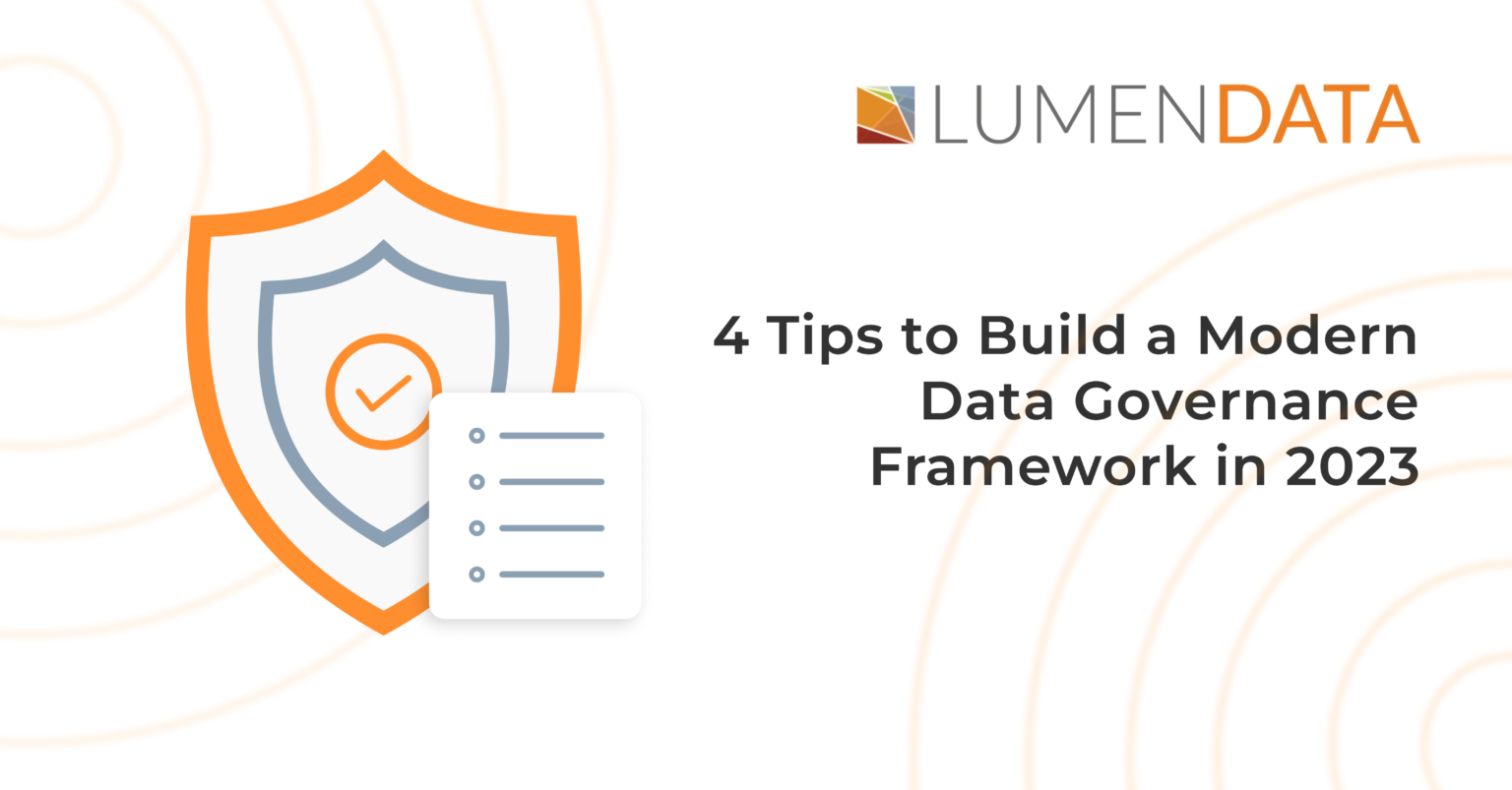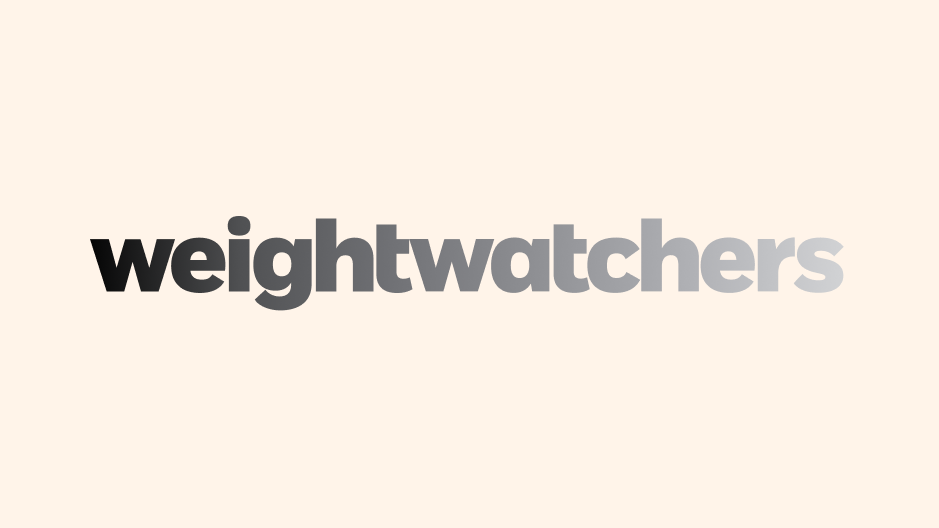With a rapidly evolving data landscape, organizations need to step up the ways they approach and manage sensitive business information. Enter modern data governance framework! It includes new-age processes, policies, and technologies to ensure secure management of data assets, while also facilitating innovation, agility, and enhanced efficiency.
This blog post will discuss some captivating tips to develop the right data governance framework for your enterprise. We shall also look at some key notes on the meaning of data governance framework, its importance, and the LumenData advantage.
Understanding data governance framework
Data governance framework encompasses a set of guidelines, policies, and practices to ensure effective management and protection of data. It is a defined approach or structure that guides businesses through the implementation of data governance within their organizations. It provides a roadmap that ensures data is managed securely and in alignment with company goals and regulatory requirements.
Imagine a healthcare organization with multiple departments, electronic health records systems, and healthcare professionals. Without a data governance framework in place, there are high chances that the organization will face challenges such as:
- Inaccurate data
- Inability to identify what data exists with which department
- Inefficiency to comply with data regulations
- Inability to access the right patient data at the right time
- Difficulty in analyzing metrics and generating accurate reports
A data governance framework helps establish a solid foundation to facilitate data integration, access, and collaboration within the organization. Businesses looking to extract meaningful insights from their data, identify new market trends, make informed business decisions, and innovate new products or services must invest in developing a modern data governance framework.
Components of data governance framework
Let’s take a look at a few crucial elements that must be incorporated into your data governance framework:
1. Data lineage –
It refers to the ability to track data flow from its source to its destination. It provides a clear understanding of how data is created, stored, and how it transforms over time. With data lineage, organizations can achieve more transparency into data assets and identify errors and inconsistencies that may occur during the transformation process.
2. Data stewardship –
It refers to the practice of managing data assets within an organization. Data stewardship ensures that the quality, integrity, availability, and security of data is maintained throughout its lifecycle. It helps businesses make sure that data governance principles and guidelines are followed effectively.
3. Data masking –
Also known as data obfuscation, data masking is a technique to protect sensitive information by replacing actual data with modified numbers and characters. It helps businesses protect both the company’s and customers’ sensitive information. There are two types of data masking – static and dynamic. The former masks data at rest while the latter masks the data in transit.
Tips to build the right data governance framework
1. Define your goals
Every business is unique and so are the business objectives. Ask yourself – What is the challenge you face in terms of data? While some organizations aim to improve data quality, some focus on ensuring compliance and better decision-making. For instance, a healthcare organization’s governance goal might be to ensure the security of patient data while facilitating data sharing for medical research and development purposes. Hence, it makes sense to start your framework development process by outlining your data governance objectives.
The rise of SaaS MDM
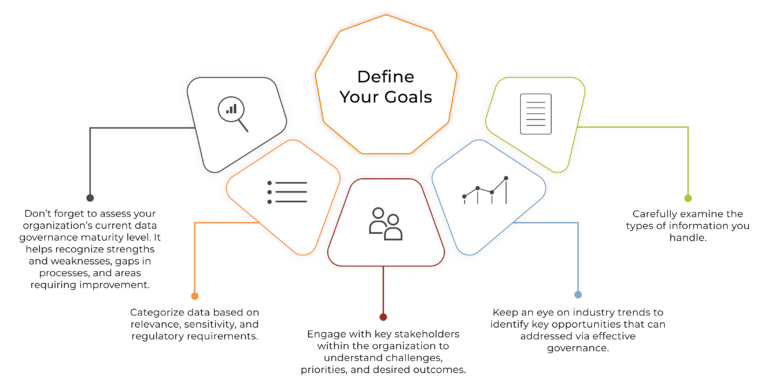
2. Adapt a people-centric approach
An effective data governance framework goes beyond technical and legal considerations. It is important to place the needs, rights, and concerns of individuals at the core of the framework’s design and implementation. By fostering a culture that values data and encourages collective involvement, organizations can build a robust governance framework that drives value.

3. Establish data governance roles, processes, and policies
When organizations define roles, processes, and policies, it enhances accountability and efficiency in managing data within the enterprise. People know what specific tasks they are responsible for. Also, clearly documented procedures make it easier to streamline workflows and automate repetitive tasks.
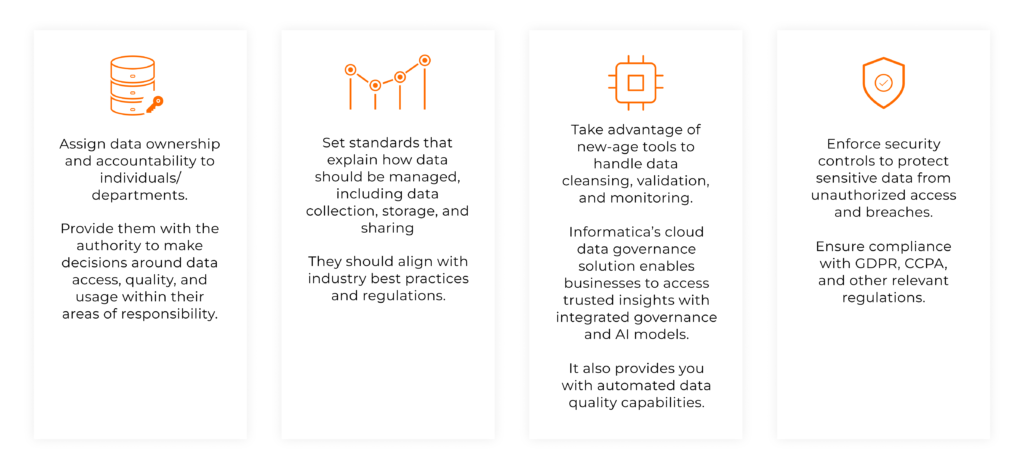
4. Evolve, evolve, and evolve
Remember that designing a data governance framework is an ongoing process. It requires continuous improvement.

Navigate your data governance journey with LumenData
Here at LumenData, we help businesses across industries to build robust data governance frameworks and ensure data integrity, consistency, privacy, and compliance. We approach data governance in a pragmatic way with a special focus on processes involving technical implementation.
Our team doesn’t believe in a cookie-cutter approach. We develop tailored governance strategies aligned with your business vision.
Here’s how we are different:
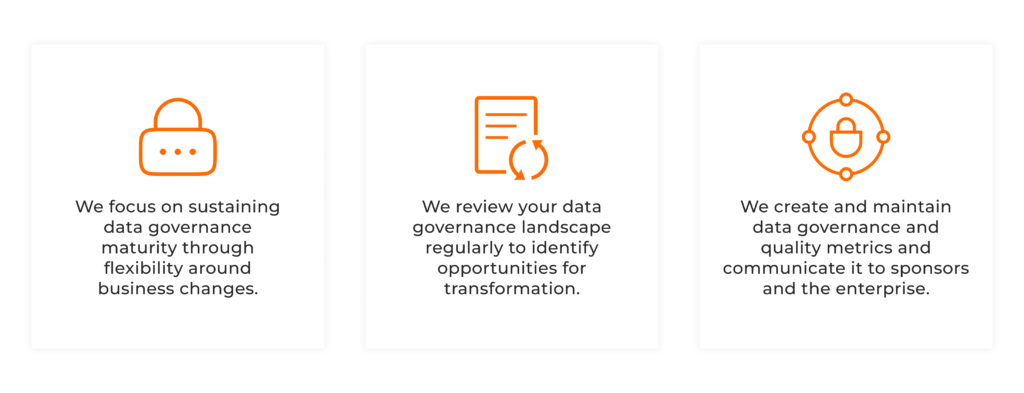
Get in touch with us to learn more. Choose LumenData as your partner to unlock the true value of your data asset and drive business innovation.
Authors:

Shalu Santvana
Content Crafter

Ankit Kumar
Technical Lead

Chak Srinivasan
Director, Sales

Shalu Santvana
Content Crafter

Ankit Kumar
Technical Lead

Chak Srinivasan
Director, Sales
